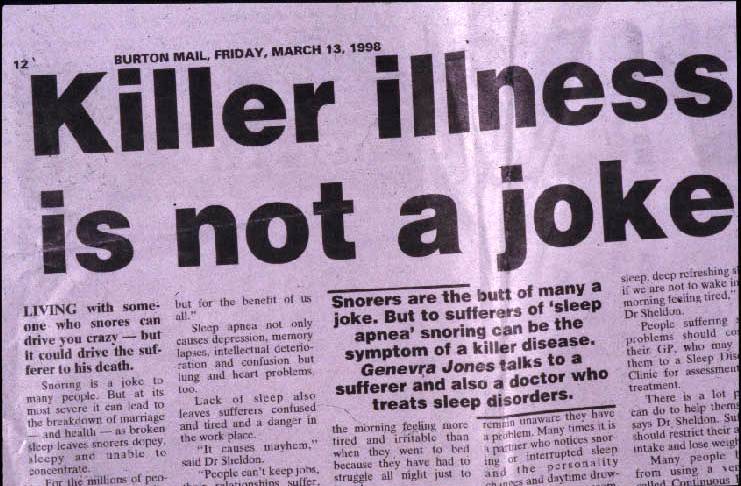
 |
Snorers.co.uk |
This site offers information about the
assessment and management of snoring and obstructive sleep apnoea
syndrome.
In common with most medical related sites, we can accept no
specific responsibility for the information given. Readers should
consult their General Practitioner if they have any questions
about their symptoms or treatment.
Introduction to Snoring and Obstructive Sleep Apnoea (OSA)
60% of the male population over 50 years snore but only a small proportion pluck up the courage to do anything positive to reduce it. The remainder put up with the unsatisfactory state of disrupting the sleep of themselves and their partner on a regular basis. It is often difficult for other people to sympathise with the intolerable situation of an otherwise happy couple having to spend their nights apart simply because one of them makes a loud noise when breathing while asleep. Frequently snorers avoid going on holiday or staying at friends' homes for fear of causing embarrassment. This website describes some of the treatments available to help reduce snoring noise and the more serious condition of Obstructive Sleep Apnoea Syndrome (OSAS).
Snoring is a socially disruptive noise caused by a partially obstructed upper airway during sleep. The noise is generally caused by turbulent airflow in the back of the throat (oropharynx). If the airway is narrowed, then the air breathed in moves faster than normal at the back of the throat, and the floppy soft skin near the palate collapses inwards and starts to vibrate which makes a snoring noise. The soft part of the palate frequently vibrates during this situation. If the person is able to continue breathing at a reasonable rate during this, then they will have simple snoring since they do not actually obstruct (choke) while asleep.
Some patients however have an
alarming tendency to obstruct their breathing repeatedly during
sleep. This results in several features which together are known
as Obstructive
Sleep Apnoea Syndrome (OSAS). The
patient is seen to stop breathing and hold their breath for a
long period, sometimes almost a minute. They then restart
breathing with a violent gasp and briefly appear to be choking
and struggling.  These patients frequently complain of
excessive sleepiness during the day since they have had such poor
quality sleep and have had insufficient important deep-type sleep.
The long term effect on health of OSA is uncertain but some
medical researchers claim that OSA is associated with increased
morbidity from hypertension and cerebrovascular disease. There
may also be increased risk of traffic accidents. Nevertheless it
is certain that patients with significant OSA have impaired
quality of life since they are usually struggling to keep awake
at work or during relaxation time. They are the subject of
ridicule and irritation from their friends and family.
These patients frequently complain of
excessive sleepiness during the day since they have had such poor
quality sleep and have had insufficient important deep-type sleep.
The long term effect on health of OSA is uncertain but some
medical researchers claim that OSA is associated with increased
morbidity from hypertension and cerebrovascular disease. There
may also be increased risk of traffic accidents. Nevertheless it
is certain that patients with significant OSA have impaired
quality of life since they are usually struggling to keep awake
at work or during relaxation time. They are the subject of
ridicule and irritation from their friends and family.
Click on the headings below for more details